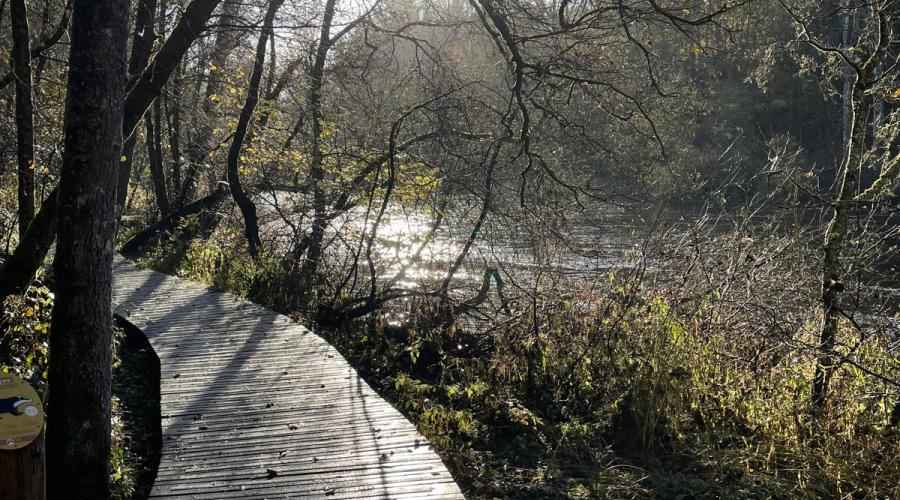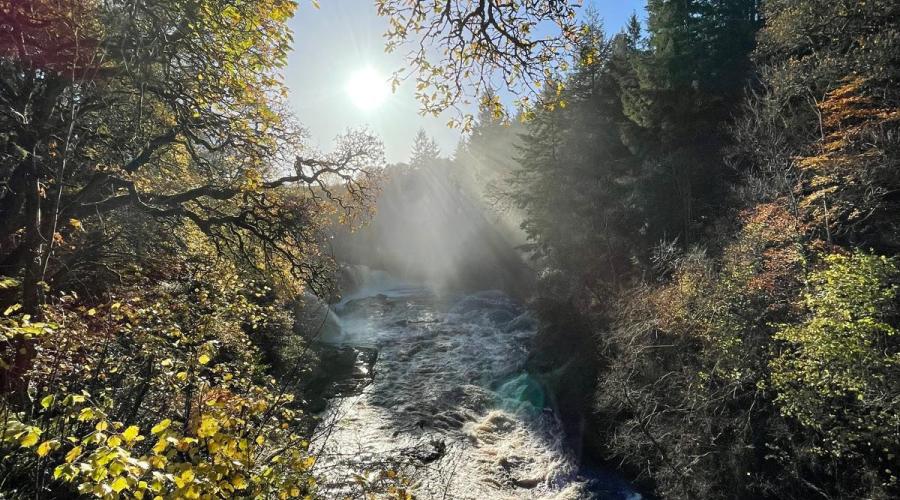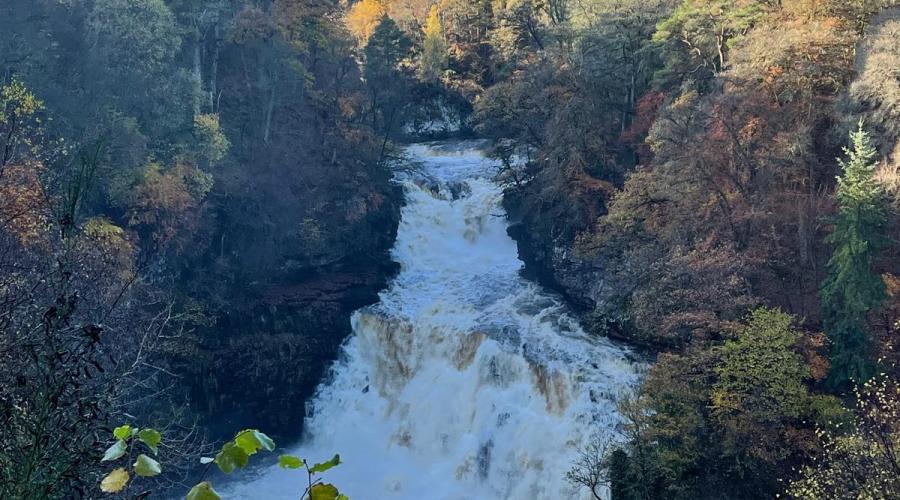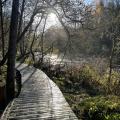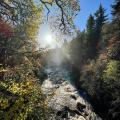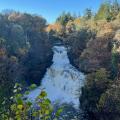Cascades & Currents of Clyde
2 people attending
13 places left
This scenic 10 km walk takes you along the banks of the River Clyde, through ancient woodlands, and past the breathtaking Falls of Clyde. A mix of gentle riverside strolling and woodland trails, the route offers a blend of natural beauty, rich history, and fascinating engineering feats. Expect to see an abundance of wildlife, including otters, kingfishers, and possibly even peregrine falcons.
The River Clyde
One of Scotland’s most famous rivers, the Clyde stretches for 176 km (109 miles) from its source in the Lowther Hills to the Firth of Clyde. It has played a crucial role in Scotland’s history, from its significance in shipbuilding and industry to its function as a lifeline for trade and commerce. Today, while its industrial past is still evident in Glasgow, the upper stretches of the river offer a tranquil escape into nature.
The Walk Route
The journey begins in the charming village of New Lanark, a UNESCO World Heritage Site. Founded in the late 18th century by David Dale and later developed by social reformer Robert Owen, New Lanark was a pioneering model of workers’ welfare and progressive industry.
From here, follow the well-marked Clyde Walkway as it meanders through dense woodlands and alongside the flowing river. Soon, the sound of rushing water signals your arrival at the Falls of Clyde—a spectacular series of waterfalls comprising Dundaff Linn, Corra Linn, Bonnington Linn, and Stonebyres Linn. Corra Linn, the most famous of the falls, drops dramatically from a height of 27 metres (90 feet) and was once admired by poet William Wordsworth.
As you continue, the trail offers numerous viewpoints, allowing you to take in the raw power and beauty of the falls. Interpretive signs provide insight into the area's rich biodiversity, with red deer, badgers, and a variety of bird species calling this habitat home.
Hydropower at the Falls of Clyde
In addition to its natural beauty, the Falls of Clyde also showcase an important chapter in Scotland’s renewable energy history. The Bonnington Power Station, constructed in 1926, was Scotland’s first commercial hydroelectric plant and remains operational today. Harnessing the power of the Clyde, the station provides clean electricity while seamlessly blending into its surroundings. An information board near the plant details its operation and contribution to Scotland’s energy network.
Is it dog friendly?
Dogs are very welcome but please note and abide by the Scottish Outdoor Access Code. Please also remember not everyone loves your dog as much as you do so please be mindful of other members.
Photos : Taken by ODL Member simmcgil42.
- - - - - - - - - - - - - - -
Want to keep in touch with what's going on in Scotland? Join our Telegram chat and notification groups and bookmark our upcoming events list with this link.
IMPORTANT! - Participation Statement
You MUST complete a Participation Statement, in addition to booking your event space before attending an OutdoorLads event. You only need to complete this Participation Statement once, not for each event you attend.

